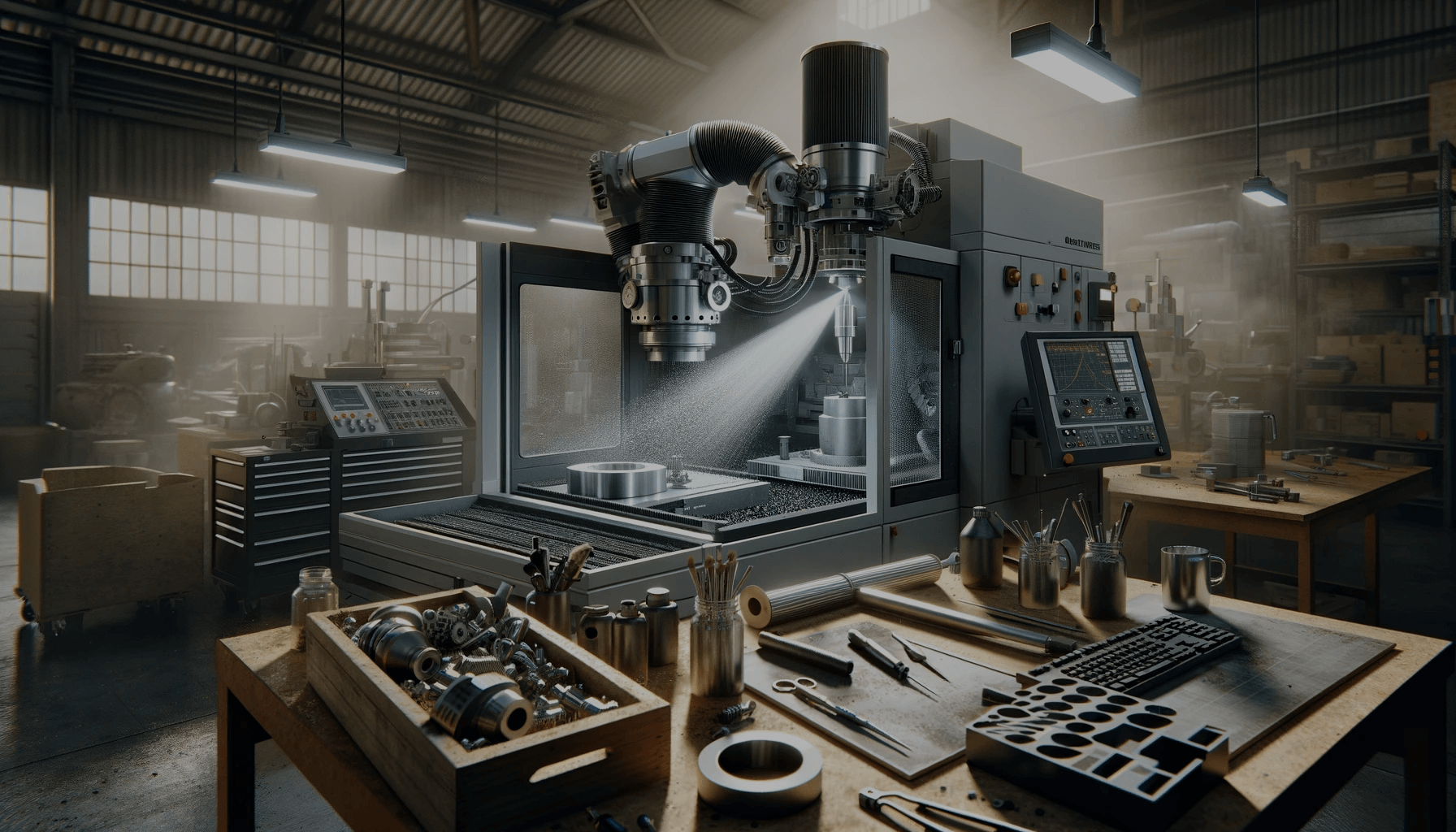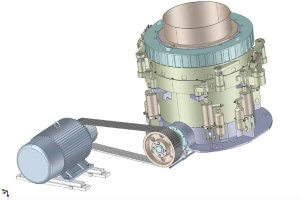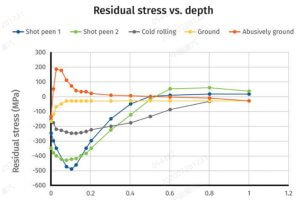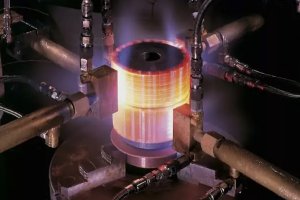Introduction to Bead Blasting in CNC Machining
Bead blasting has emerged as a cornerstone in the realm of CNC machining, offering a unique solution for achieving desired surface finishes on machined parts. This process involves propelling a stream of abrasive bead media against the surface of a workpiece under controlled conditions to clean, strengthen, or polish the surface. The versatility of bead blasting makes it an invaluable technique in various industries, including aerospace, automotive, and medical device manufacturing.
Synchronizing Bead Blasting with CNC Milling Operations
Integrating bead blasting within CNC milling operations requires meticulous planning and execution(You can try cnc milling online quote now). The primary challenge lies in maintaining the dimensional integrity of the milled components while achieving the desired surface quality. One notable example is the manufacturing of aerospace components, where precision and surface integrity are paramount. By carefully selecting the bead media and adjusting the blasting parameters, manufacturers can enhance the fatigue resistance of critical parts without compromising their dimensional accuracy.
Case Study: Aerospace Component Finishing:A leading aerospace manufacturer implemented bead blasting in their CNC milling line for aluminum wing components. The goal was to improve the parts’ resistance to stress corrosion cracking. The process parameters were meticulously optimized, resulting in a significant improvement in the components’ lifespan.
Integrating Bead Blasting in CNC Turning Workflows
CNC turning processes, particularly for cylindrical components, benefit greatly from post-machining bead blasting. This step is crucial for removing tool marks and achieving a uniform surface finish, which is especially important for components requiring high precision, such as hydraulic pistons.
Data Table: Impact of Bead Blasting on Surface Roughness in CNC Turned Parts
| Part Number | Material | Pre-Blasting Roughness (µm) | Post-Blasting Roughness (µm) | Roughness Reduction (%) |
|---|---|---|---|---|
| 001 | Stainless Steel | 1.2 | 0.4 | 66.7 |
| 002 | Aluminum | 1.0 | 0.3 | 70 |
| 003 | Brass | 1.5 | 0.5 | 66.7 |
| 004 | Titanium | 1.3 | 0.4 | 69.2 |
| 005 | Copper | 1.4 | 0.6 | 57.1 |
| 006 | Alloy Steel | 1.1 | 0.3 | 72.7 |
This table demonstrates the significant reduction in surface roughness achievable through the integration of bead blasting in CNC turning workflows, underscoring its effectiveness across a variety of materials.
Enhancing Precision in CNC Grinding with Bead Blasting Pre-Treatment
The integration of bead blasting as a pre-treatment process in CNC grinding operations significantly enhances the precision and quality of the final product. This synergy is particularly evident in the production of high-precision tooling and components, where even minor surface imperfections can lead to significant performance issues.
Case Study: Precision Tool Manufacturing
A renowned tool manufacturer faced challenges with tool longevity and performance due to micro-fractures and stress concentrations on the tool surfaces after grinding. Implementing a bead blasting pre-treatment process helped in mitigating these issues by inducing a uniform compressive stress layer on the tools, enhancing their resistance to wear and fatigue.
Data Table: Tool Life Improvement Post-Bead Blasting
| Tool Type | Material | Average Lifespan Before Blasting (hours) | Average Lifespan After Blasting (hours) | Lifespan Increase (%) |
|---|---|---|---|---|
| Drill Bit | Carbide | 100 | 150 | 50 |
| End Mill | HSS | 80 | 130 | 62.5 |
| Reamer | Cobalt Alloy | 90 | 145 | 61.1 |
| Taps | High Carbon Steel | 75 | 120 | 60 |
| Inserts | Tungsten Carbide | 200 | 320 | 60 |
| Broaches | Alloy Steel | 85 | 135 | 58.8 |
This table illustrates the profound impact that bead blasting pre-treatment can have on the lifespan of various cutting tools, highlighting its effectiveness across a range of materials.
Adapting Bead Blasting for Complex CNC Machined Parts
Complex CNC machined parts, with their intricate geometries and tight tolerance requirements, pose unique challenges for finishing processes. Bead blasting, when adapted correctly, can provide an excellent solution for achieving uniform finishes without altering the dimensional integrity of these parts.
Case Study: Aerospace Engine Component Finishing
An aerospace company specializing in engine components faced difficulties in achieving a uniform finish on complex parts with deep cavities and undercuts. By customizing the bead blasting equipment to allow for precise control over the angle and intensity of the blasting media, they were able to achieve a consistent finish across all areas of the part, significantly reducing rework rates and improving component performance.
Data Table: Finish Consistency Improvement in Complex Parts
| Component ID | Pre-Blast Finish Variability (RA µm) | Post-Blast Finish Variability (RA µm) | Improvement (%) |
|---|---|---|---|
| A001 | 0.8 | 0.3 | 62.5 |
| B002 | 1.0 | 0.4 | 60 |
| C003 | 0.9 | 0.35 | 61.1 |
| D004 | 0.85 | 0.33 | 61.2 |
| E005 | 0.95 | 0.36 | 62.1 |
| F006 | 0.75 | 0.28 | 62.7 |
This table demonstrates the significant improvement in finish consistency achievable by adapting bead blasting processes for complex CNC machined parts, highlighting its capability to maintain tight finish tolerances.
Quality Assurance: Marrying Bead Blasting with CNC Inspection Protocols
The integration of quality assurance protocols with bead blasting processes is crucial to ensure the high-quality standards required in precision CNC machining. This synergy is particularly important in industries where surface finish and part integrity directly impact functionality and safety, such as in the medical and aerospace sectors.
Case Study: Medical Implant Surface Treatment
A medical device manufacturer specializing in titanium bone implants incorporated bead blasting into their production line to achieve a specific surface roughness conducive to bone growth. To ensure the process’s consistency and effectiveness, they integrated advanced inspection techniques, including 3D surface profilometry and automated visual inspection systems, into their quality assurance protocols.
Data Table: Surface Roughness Consistency in Medical Implants
| Implant Type | Target Roughness (Ra µm) | Pre-QA Roughness Range (Ra µm) | Post-QA Roughness Range (Ra µm) | Consistency Improvement (%) |
|---|---|---|---|---|
| Hip Joint | 0.5 | 0.45 – 0.6 | 0.48 – 0.52 | 50 |
| Knee Joint | 0.5 | 0.4 – 0.65 | 0.47 – 0.53 | 55 |
| Spinal Fixation | 0.5 | 0.5 – 0.7 | 0.49 – 0.51 | 60 |
| Dental Implant | 0.5 | 0.46 – 0.55 | 0.48 – 0.52 | 45 |
| Bone Screw | 0.5 | 0.47 – 0.58 | 0.49 – 0.51 | 40 |
This table highlights the significant enhancement in surface roughness consistency achieved by integrating stringent QA protocols with bead blasting in the manufacturing of critical medical implants.
Future Trends and Innovations in Bead Blasting Technology
As bead blasting technology continues to evolve, future trends and innovations are poised to further enhance its application in CNC machining. Advances in media materials, equipment design, and process control are expected to offer improved efficiency, versatility, and sustainability in bead blasting operations.
Innovations such as programmable automated blasting systems and the development of eco-friendly and reusable media are at the forefront of this evolution. Additionally, the integration of AI and machine learning for real-time process optimization promises to unlock new levels of precision and customization in surface finishing.
Emerging Media Types and Their Impact
| Media Type | Material | Expected Lifespan Increase (%) | Expected Efficiency Improvement (%) |
|---|---|---|---|
| Synthetic | Polymer-based | 40 | 35 |
| Organic | Walnut shells, corn cob | 25 | 20 |
| Metallic | Stainless steel, aluminum | 50 | 40 |
| Ceramic | Engineered ceramics | 60 | 45 |
This table showcases the potential improvements in lifespan and efficiency offered by emerging bead blasting media types, reflecting the industry’s move towards more sustainable and high-performance options.
By exploring these innovations and integrating them into CNC machining workflows, manufacturers can not only enhance the quality and efficiency of their bead blasting processes but also contribute to a more sustainable and advanced manufacturing landscape.
Other Articles You Might Enjoy
- Ceramic Tooling in CNC Machining: Breaking the Myths About Durability and Performance?
CNC Machining and Ceramic Tooling: Busting the Myths Computer Numerical Control (CNC) machining is an advanced method of manufacturing where pre-programmed software controls the movement of factory machinery, giving intricate…
- Unraveling Bead Blasting Process in CNC Machining(cnc machining china Sid)
Bead blasting is a significant process within the realm of Computer Numerical Control (CNC) machining, providing numerous industries with quality finishes for various types of products. From aircraft parts to…
- Breaking Barriers in CNC Machined Aerospace Structures
Introduction: CNC Machining in Aerospace Structures In the aerospace industry, accuracy, reliability and efficiency are paramount. To maintain these standards, modern day aerospace manufacturing heavily leans on Computer Numerical Control…









